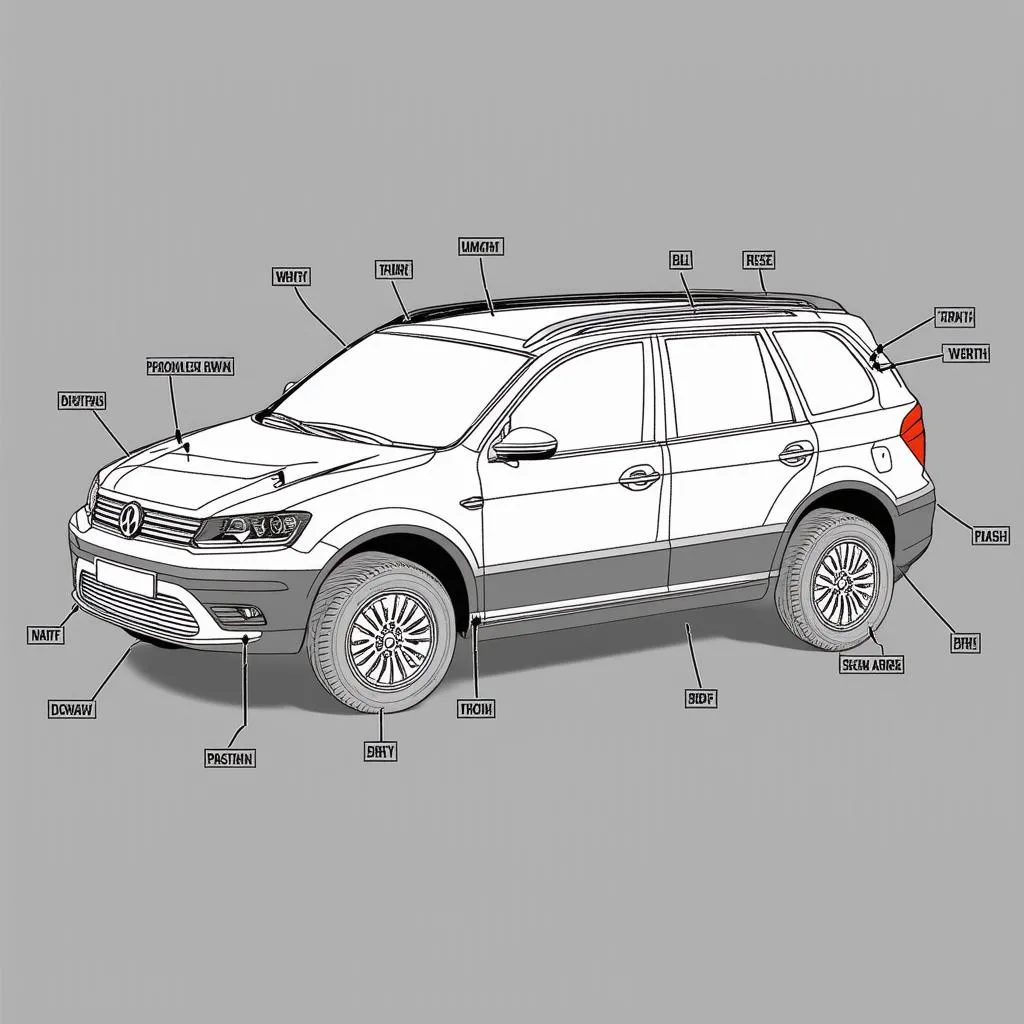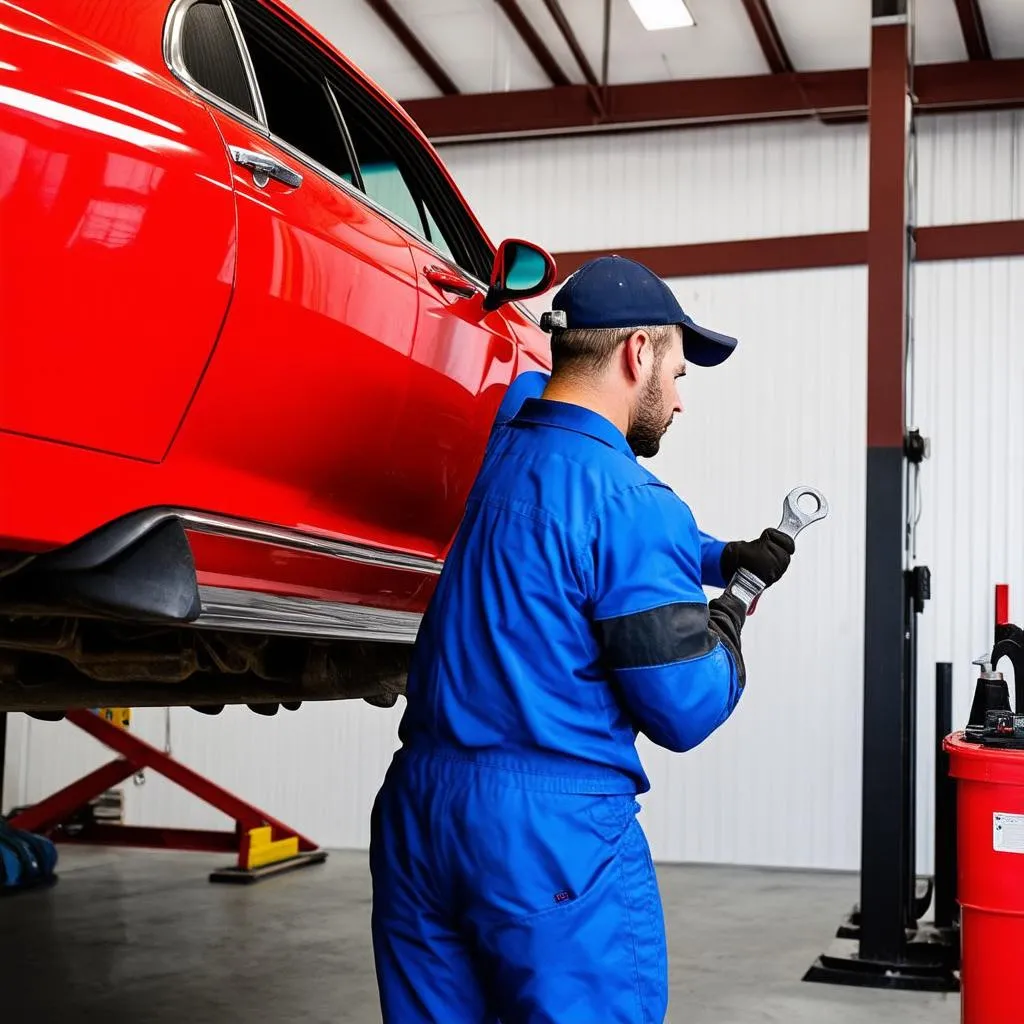Imagine this: you’re driving down a sun-drenched California highway in your sleek new Tesla Model S, the wind whispering tales of adventure through your open windows. Suddenly, a rogue shopping cart jumps out from a crowded parking lot, leaving an unsightly dent on your beloved vehicle. Explaining this to your mechanic can feel like learning a new language. What exactly is that dented part called, anyway?
Understanding the basic anatomy of a car, specifically the names of the panels, can be surprisingly helpful in situations like this – and in many more scenarios you might encounter as a car owner.
Unlocking the Automotive Lexicon: What Do We Mean by “Car Panels”?
Before we delve into the fascinating world of car part nomenclature, let’s clarify what we mean by “car panels.” From a mechanic’s perspective, like the seasoned professionals at our partner garages across the US, these panels represent the individual pieces of metal (or in modern cars, often lightweight materials like aluminum or carbon fiber) that are meticulously assembled to form the outer shell of your vehicle. They are essential not just for aesthetics but also for aerodynamics, safety, and structural integrity.
Why Does Knowing Car Panel Names Matter?
Beyond impressing your friends with your newfound automotive vocabulary, understanding these terms has practical implications:
1. Effective Communication: Imagine explaining the damage to your insurance agent or mechanic without knowing the difference between a fender and a quarter panel. Precise language ensures everyone’s on the same page.
2. DIY Repairs and Maintenance: For the mechanically inclined, knowing your way around a car’s exterior is crucial when tackling minor repairs or modifications.
3. Savvy Car Shopping: Being able to identify different panels can be useful when evaluating the condition of a used car. Is that just a scratch on the rocker panel, or a sign of more serious rust damage? Knowledge is power, especially in the world of automobiles!
A Guided Tour of Your Car’s Exterior Panels
Let’s embark on a journey around a typical car, familiarizing ourselves with the key panels:
1. Hood (or Bonnet): This one’s a no-brainer. It’s the hinged panel covering the engine bay, often adorned with the manufacturer’s emblem like a badge of honor.
2. Fender (or Wing): Think of these as your car’s “shoulders.” They’re the panels that arch over the wheels, protecting them from road debris.
3. Bumper: The unsung heroes of minor collisions, bumpers are designed to absorb impact and minimize damage to the car’s body.
4. Grille: Often the most distinctive design element, the grille sits proudly at the front, allowing airflow to cool the engine.
5. Headlights and Taillights: These are pretty self-explanatory, providing illumination for nighttime driving and signaling your intentions to other drivers.
6. Doors: These swinging gateways grant you access to the vehicle’s interior, hopefully with a satisfying thunk when closed properly.
7. Roof: Providing overhead protection from the elements, the roof can come in various styles, from the classic hardtop to the more glamorous sunroof or panoramic moonroof.
8. Windows: Essential for visibility, windows can be raised, lowered, tinted, and even heated in modern cars.
9. Pillars (A, B, C, etc.): These vertical supports connect the roof to the car’s body, adding structural rigidity and often housing safety features like airbags.
10. Quarter Panel: Located between the rear door and the trunk (or hatch), this panel often houses the fuel filler cap.
11. Trunk (or Boot): Your car’s storage compartment, ideal for groceries, luggage, or that emergency set of golf clubs.
12. Rocker Panel: The often-overlooked strip beneath the doors, vulnerable to rust and damage from road debris.
 Car exterior diagram with parts labeled
Car exterior diagram with parts labeled
Don’t Forget the Undercarriage!
While not technically “panels,” several components on the underside of your car deserve an honorable mention:
1. Floor Pan: The foundation of your car’s interior, providing a flat surface and structural support.
2. Frame Rails: The backbone of the vehicle, absorbing impact forces in a collision and keeping everything aligned.
3. Exhaust System: Responsible for channeling harmful exhaust gases away from the engine, often running beneath the car’s body.
Common Car Panel Questions Answered
Let’s address some frequently asked questions about car panels:
1. What is the difference between a fender and a quarter panel?
Think of the fender as protecting the front wheels and the quarter panel as protecting the rear wheels and trunk area.
2. Can I replace a car panel myself?
While some minor repairs might be possible for the ambitious DIYer, replacing entire panels often requires specialized tools and expertise. Consulting a professional is usually the safest bet.
3. How can I protect my car panels from rust?
Regular washing, waxing, and touch-up paint on chips can go a long way in preventing rust.
4. What is the strongest part of a car’s body?
The A-pillars and frame rails are designed to withstand significant forces during a collision, protecting the passenger compartment.
Your Gateway to Automotive Expertise
Understanding your car’s anatomy is just the first step in becoming a more informed and empowered car owner. For expert advice on car maintenance, diagnostics, or even just to decode a confusing car part name, don’t hesitate to reach out to us via Whatsapp at +84767531508. Our team of automotive gurus is always ready to assist!
 Mechanic working on car in a garage
Mechanic working on car in a garage
Further Reading:
- Learn more about car diagnostics tools: [Link to relevant article on your website]
- Explore common car problems and solutions: [Link to relevant article on your website]
We encourage you to share your thoughts, questions, and car-related anecdotes in the comments below!